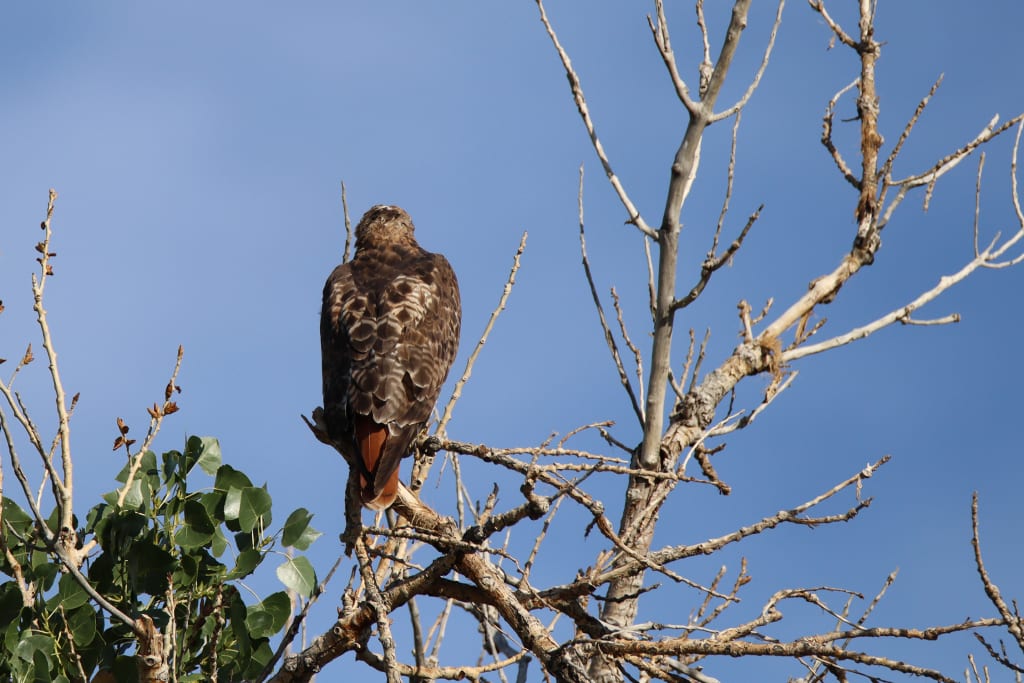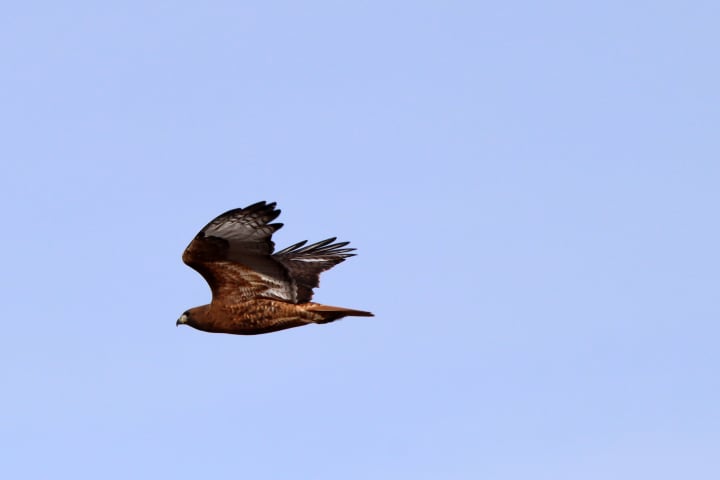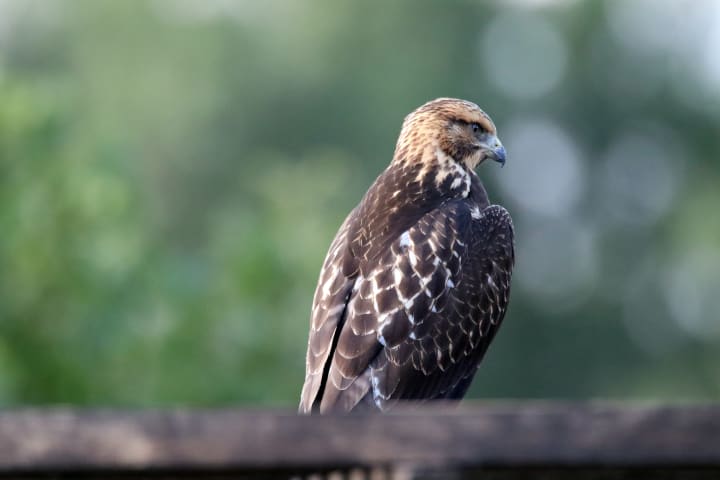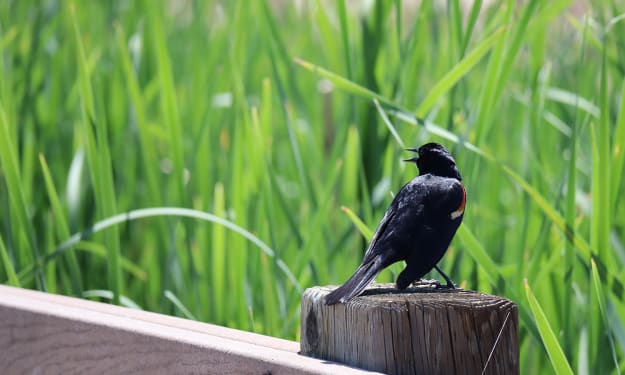Tale of a Red Tail
Diving into the World of a Famous Hawk

The first time I saw a red-tailed hawk and was able to identify it, I took the picture posted above this intro, and kind of thought, "Oh. Yeah." Some of the red-tailed hawk colorings are incredibly easy to spot, like my new vibrant-tailed friend. But soon I started to go down a rabbit hole of morphs, belly bands and patagial marks and learned so much more about this fairly common raptor.
Red-tailed hawks are large, widespread birds of prey that belong to the genus buteo. Some other buteo buddies include the Swainson's hawk, the ferruginous hawk, and the red-shouldered hawk. Sometimes called chickenhawks, red-tails are found in North and Central America, and can adapt to many different biomes, even non-ideal habitants, and are often seen in grasslands, forests, grassy areas and urban areas. The amount of times I have seen a red-tailed hawk perched on a light pole while zooming down the highway is almost more numerous than the times I have observed them in the wild.
These birds have a wingspan of about 1.5 meters (59 inches, about 5 feet), and a length of about 45-60 cm (about 18-24 inches). Female red-tailed hawks are usually larger than the males. Their plumage is also impressive, and red-tailed hawks can be divided into two groups: the red morphs and the color morphs. The red morphs have bright red plumage, while the color morphs have a variety of colors, such as gray, brown, and white. Red-tailed hawks have a wide variety of physical features that make them distinct from other birds of prey. They have a large and broad wingspan, and their tail feathers are long and pointed. They also have powerful legs and talons, which help them capture and carry away their prey.

Red-tailed hawks are highly intelligent birds, and they exhibit a range of behaviors that make them unique. They live in small groups, and can be seen soaring in the sky, searching for prey. These birds are also highly territorial, and will fiercely defend their nesting sites from other birds. They have also been known to attack other birds if they are disturbed.
Red-tailed hawks are known for their powerful and graceful flight, as well as their keen eyesight, which helps them hunt for their prey. Their eyes are also adapted to low-light conditions, which helps them hunt in the dark, and they can spot their prey at long distances. They are also very vocal birds, and their call can be heard from very far away. The famous bald eagle cry often heard in movies is over overdubbed with the piercing, shrill 'skree' of a red-tailed hawk.
Red-tailed hawks are also known for their impressive hunting skills. They hunt by soaring high in the sky, and then swooping down to snatch up their prey. Red-tails are carnivorous birds, and they mainly feed on small mammals, such as voles, mice, and rabbits. They are also known to eat birds, reptiles, amphibians, and even fish. These birds are also opportunistic feeders, and they will eat whatever they can find. In addition to hunting, they will also scavenge for food, and will eat carrion if they can find it. These hawks will also store their food in caches, so that they can eat it later. This helps them during times of scarcity, and also allows them to save energy.
Red-tailed hawks mate for life, and they will remain with the same partner for many years. They usually form their bonds in the springtime, and they will often perform courtship displays, such as soaring in the sky together. Once the pair is formed, the red-tailed hawks will start to build a nest. The nest is usually made from twigs and sticks, and it is usually placed high up in a tree. Once the nest is built, the female will lay eggs. The eggs are usually white or pale blue. The female will then incubate the eggs for about a month before they hatch. Once the eggs hatch, the juvenile red-tailed hawks will stay in the nest for about a month before they start to explore the world. The juveniles will be fed by their parents until they are old enough to hunt on their own.
Juveniles are usually brown and white, and they will slowly start to develop the distinctive red tail and white underside as they grow older. The juveniles will stay with their parents for up to two years, and they will learn how to hunt and fly. Once they are old enough, they will move away and start to look for their own territory.

Red-tailed hawks are protected by law in most parts of North and Central America. However, their numbers are still declining due to habitat loss, illegal hunting, and poisoning from pesticides. In order to protect these birds, there are several conservation efforts that are being made. These efforts include habitat protection, environmental education, and the protection of nesting sites. In addition, there are also captive breeding programs that are being used to increase the population of red-tailed hawks. These programs have been successful, and the population of red-tailed hawks is slowly increasing.
About the Creator
Erica J.
Chronic-pain sufferer just trying to be healthy and enjoy life while bird lurking and photographing nature. Purchase photo prints, read birding blogs, or see hiking videos: https://linktr.ee/erica80hd
Enjoyed the story? Support the Creator.
Subscribe for free to receive all their stories in your feed. You could also pledge your support or give them a one-off tip, letting them know you appreciate their work.






Comments
There are no comments for this story
Be the first to respond and start the conversation.